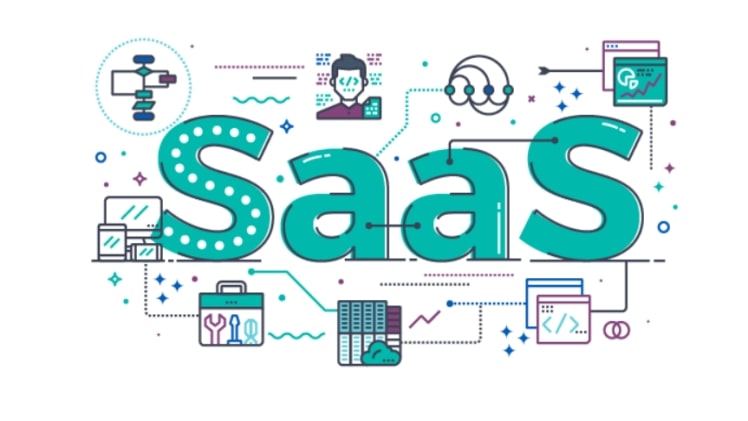b2b SaaS lead generation has grown immensely in popularity and usefulness recently in the business world. That’s why we expect a spike in Saas testing as well. However, the testing methods and processes of Saas have several complications and challenges, which must be addressed by quality assurance professionals.
In today’s article we are going to discuss the scope, specifics and factors for success of the Saas testing. But before you start reading, why don’t you briefly go over these two articles about benefits of outsourcing software development and software development technology that will rule 2022.
What’s Saas?
Saas stands for software as a service. It simply is way of distributing applications as a service over the internet. What this means is that you don’t have install the software or worry about its maintenance, you can just access it through internet. You are completely free from the complications of the software and hardware management.
The Saas apps run on the server of the Saas provider. The few benefits of Saas are as follows:
- Quickly and efficiently provide software
- Provide solution to all of its tenants all over the world
- Cheaper in comparison to on-premises solutions
Saas Testing
Saas testing are all the methods and processes used to make sure that the app built via Saas model is functioning as it was designed to. The Saas industry has already hit the mark of $100 million and it is continuing to grow. So now whenever the apps are delivered using Saas model, there are complex A/B Testing implications associated with it.
The development teams will have to put together a strategy that considers the method of the app development. That is, the Saas apps are different than those built on premises. The testing of Saas apps validates them based on the data integrations, non-functional requirements and business workflows along the configurations.
Just like every effective testing protocol, Saas testing is much more impactful only if it is incorporated early in the software development life cycle.

Testing Challenges
There are two distinct categories of the challenges of Saas testing and they are as follows:
- Software challenges
- Delivery model challenges
The Saas apps are off-the-shelf and for commercial use so the codebase for most them is the same. This leaves little to no visibility in the development and testing of the product. Also the access of the testers is kind of restricted to the codebase. The focus at this point will mostly be on the customizations and the configurations which can be hard to maintain.
The challenges in the delivery model may include validating tenancy on a wide range and undertaking extensive non-functional testing. This then further includes addressing security challenges and regression tests for upgrades.
Saas Specifics
Saas testing is always relevant whether you only want to build an app or already have developed one or are just starting to make one now. But what’s important is that you start early. But if you’re already in trouble then a well-planned strategy will help maneuver you in the right direction. That way you can avoid any future Saas related problems.
The following are a few Saas specifics.
Concerns Before Release
What the Saas tenants appreciate more about it is its ability to scale up and down the number of users quickly. Many providers of Saas use cloud tools that automatically do the scaling. These tools help you save money by enabling and terminating the cloud functions based on their requirement. But the conditions for this are optimal settings and health of the function.
Concerns After Release
With Saas apps new features are released once a month or several times a year. Additionally, the issues that the tenants point out must be corrected quickly, most of the time within hours. The Saas tenant are not very patient.
This could cause your test team to be stuck in the onslaught of tests with strict deadlines and no way out.
Other Concerns
Tenancy
Multi-tenancy helps the providers of Saas avoid overuse of their finances since the same resources can be used by other users and because it makes software maintenance easy. Although useful, multi-tenancy can cause issues. The following are a few of those problems:
- Mishandling sensitive business data
- Not being able to satisfy integration and flexibility needs of tenants
- Not being able to adapt to client’s requirements
Customization and Configuration
Customization and configuration is what allows your tenants to adopt the Saas solution you offer them. If what you offer doesn’t fit their needs then you should be ready for high churn rates. Also if you let your bug fixes and amendments damage the customization you offer then your clients are likely to leave the solution you offer.
Saas Scope
To prevent the Saas specifics from turning into big problems, you must develop a detailed test plan that is balanced. The plan should include all types of test there are for on-premises software but keeping in consideration the specifics of Saas. The tests are as follows:
- Test for functionality
- Test for compatibility
- Test for performance
- Test for usability
- Test for external API
- Test for security
- Regression tests
- Tests for recovery and backup
Factors of a Successful Saas Testing
CI/CD Methodology
Continuous integration and delivery method is a useful practice to turn to since it allows you to deliver the features of your software and amendments you make in it in fractions. This saves you from bugs and other potential leakages.
Testing Based on Risks
In this method tests that validate important features, where bugs may show and the damage of which may cause huge financial loss are kept as top priority.
Automation of Tests
Automation of test is necessary for quick validation of critical software features.
Staging Environment
Saas testing should be done in a proper staging environment so that production is not impacted.
Virtualization of Service
It is important for various tests that validate customizations and configurations, API and performance.

Conclusion
The purpose of Saas testing is not just to identify and fix bugs in the Saas based solutions but also to stabilize, maintain and improve their functions. There are many testing types in Saas solutions but they should all be considered keeping in mind the method of development of Saas solutions and Saas specifics. The success factors that we mentioned will help you come up with a proper testing process.





